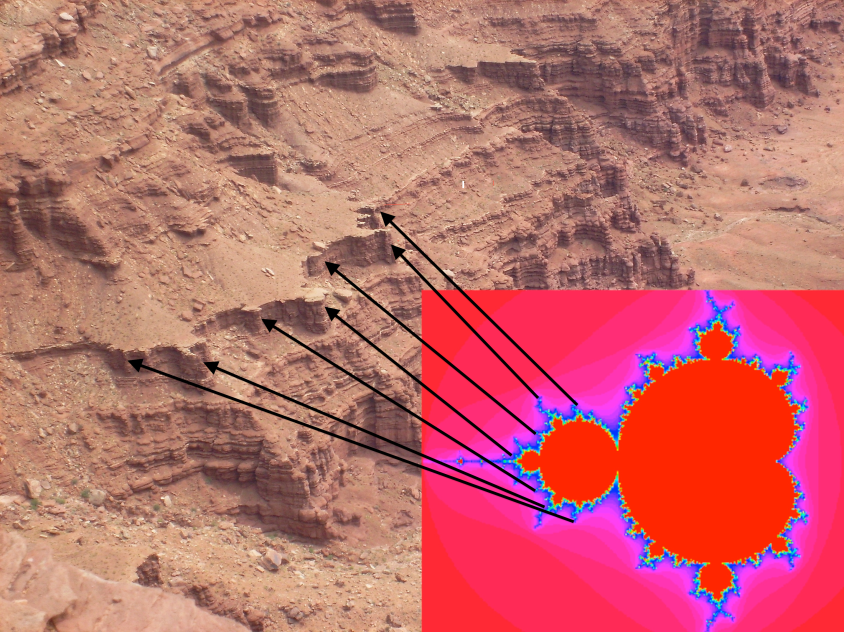Previously published at Thunderbolts.info
In Part 1 of Sputtering Canyons, we discussed Arches National Monument, and evidence it was formed by a complex sputtering discharge process. That process involved a thermal spiking, barrier discharge in a layer of wet sandstone.
In Part 2, we looked at how charge and charge depletion disperses through rock by the combined mechanisms of current drift and diffusion. We looked at evidence of diffusion patterns in the landscape and evidence of mechanical shear caused by sputtering discharge.
In Part 3, we’ll look at some secondary effects from electrical deposition and sputtering on the Colorado Plateau. These features involve processes besides sputtering discharge and lightning bolts, however. These features also involved the winds of the storm.
In the primordial, plasma typhoon that layered the dome of the Colorado Plateau, winds were mobilized by the Earth’s electric field. Ionic species of opposite charge were pushed in opposite directions. Positive and negative species segregated into streams of unipolar winds that circled the Earth in bands moving alternate directions.
The electric field gradient was from pole to pole, or at least where the poles are now, so the winds circled north to south and south to north. The effect was the same as the counter-rotating bands of wind on Jupiter. Where they met was the anodic hot spot where super-volcanoes belched ash and flame, and the bowels of the Earth spilled forth molten rock.
Between the super-volcanic maw of Yellowstone and the strato-volcanic cones on the Mogollon Rim sits the Colorado Plateau, where the winds mixed in a plasma cyclone. The meeting of the unipolar winds was the earth-sized equivalent of the Great Red Spot on Jupiter – a sustained and violent storm, charged with electricity and bent by magnetic fields – a storm beyond any Biblical description.
Like Jupiter, the winds screamed at several hundred miles per hour. Mach effects, like standing shock waves and supersonic shear created extreme pressure, density and temperature differentials. Vast updrafts and downdrafts developed, tornadoes spun-up fifty- to one-hundred miles across, and all of it carried electric current.
Where shock waves form, electric current flows. This is known phenomena. The whole idea of an EMP weapon – an electromagnetic pulse that can knock out transformers and electronic systems, destroying the grid and communications, is based on this fact. Explode a nuclear bomb in the atmosphere and it will send out a shock wave. The shock wave carries the electromagnetic pulse that spikes current suddenly and wipes out electronics and power grids.
There is no battery in the nuclear bomb that creates the EMP. The EMP forms naturally in the shock wave. There are several effects that cause this. First, the shock wave is a sharp discontinuity in density. Where the density is higher, of course there is more matter, so a higher concentration of ambient ions are there, naturally raising charge density in the shock wave. The temperature is higher too, so that causes ionization in the shock wave. There is higher pressure, so particle collisions are more frequent, again ionizing the shock wave. And the bomb itself sends radiation with the shock wave.
So all these effects add up to a large electric current in the shock wave, and it is self amplifying. As ionization frees electrons to roam, they knock away more electrons in a runaway chain reaction. The process is related to the diffusion of charge discussed in Part 2, but in this case, the current diffusion is contained by the shock wave. The shock wave and electric pulse are coherent with each other.
Any place a supersonic wind hits an object, or is forced to change vector, or where it shears against winds moving at a different velocity, a shock wave forms. A projection, like a mountain, would create a standing shock wave that creased the wind, and generated current. In a plasma atmosphere, that current would grow very large.
Another feature of shock waves is they reflect. Like any wave, a light wave, an ocean wave; when it hits something, some of it’s energy echoes. When it does, it reflects in harmonic relationship to the wave that made it. Shock waves can reflect off each other, or align with each other and vibrate in harmonic resonance.
Every lightning bolt, every belch from a volcanic vent, sent new shock waves to reverberate through the air and echo from whatever they hit. Every sheet of current in them altered the electric field around it, and the atmosphere vibrated with charged waves, stiffened and resonating with feedback from the energy of the storm.
Some traveled at the speed of sound; while standing waves, reflected from stationary objects exposed to wind, stayed in place. They crossed, interfered and canceled each other. In the chaotic turbulence of the supersonic electric storm, shock waves literally patterned the atmosphere. Because the shock waves carry current, and magnetic fields result, the right hand rule forces waves into a cross-flow pattern with 90 degree angles.
Consider how ocean waves can form a coherent pattern in a cross-current sea, as shown in this photo from Ile de Re lighthouse off the coast of France.

Shock waves formed a similar effect, only carrying electric current. As the layers of the dome built the Colorado Plateau, they scarred the land with these patterns.

This shock wave fracture pattern is almost universally found in the rim rock and cap rock of sputtered canyon walls, buttes and pinnacles. The fracturing takes the form of parallel joints, or checkerboard blocks. The blocks are sometimes deeply cut and look like broken teeth.

In other cases, they are straight, evenly spaced, parallel fissures. Razor thin shock waves created the fractures in the cap and rim rock as the dome was deposited, while it was still hot and plastic. Thermal contraction during cooling, and the tearing away of material during sputtering, broke the rocks along the shock induced fracture lines.



The same effect is seen in completely different geologic formations – the windblown buttresses on mountain flanks. These images are from Comb Ridge, which is the southern rim of the Monument Valley dome, and San Rafael Reef at the southern rim of the San Rafael Swell. Both are dunes of triangular buttresses formed by the supersonic winds sucked into the storm that formed the domes. The shock waves from the supersonic winds that formed the dunes impressed themselves into the rock.



The shock wave currents shatter into harmonic reflections in ever smaller patterns. In formations where extremely high energy was available, such as the hardened plates of flat iron buttresses on the San Rafael Reef, the shock waves continued to shatter, reflect and reverberate down to the smallest scale.
This rock photographed from a flat iron buttress in Utah by Robert Hawthorne, during a field trip following the 2017 conference, shows parallel cuts in rock only a half inch apart.

This rock photographed by the author from another buttress in Utah during the 2016 field trip. It shows the squiggled fractures of a dissipating, shock induced current along the back edge of the buttress. These rilles only penetrate a fraction of an inch into the rock, and really defy any other explanation, unless rock eating worms cut these paths.


Another feature related to shock induced currents in linear, parallel formations, are something we’ll call, inverse dykes. A dyke is a vertical wall of rock. It can be free standing, or it can be embedded in a parent rock, like a quartz vein in granite. Quartz veins are caused by very high-current shock waves (which immediately raises the question, how does gold get in them thar veins? But that is a question for a future article.)
These dykes are made of minette, which is very high in potassium ratio, making the rock highly alkaline, or anionic. Which means it’s electrons were sucked out.


They were made by shock wave currents – electro-sonic waves that scored across the land and fused the parent sands into walls of electro-chemically altered rock. They emanate from Comb Ridge on the south side of Monument Valley. And they are coherent with the triangular flat-iron buttresses of the Comb, which were formed by the same shock waves.
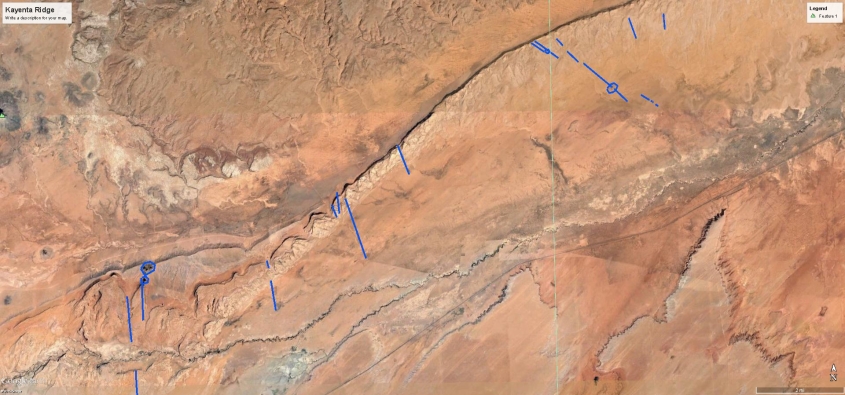

Inverse dykes are similar wall-like features that were formed by currents that depleted the rock, shielding it from sputter. These upended pancake walls at Arches N.M., Utah were left standing as the lanes between them sputtered away, in the same fashion that preferential sputtering left mesas and pinnacles in the shadow of lightning strikes. Only for these, the diffusion of charge depletion was shaped by electro-sonic shock waves.
You can see they are layered, like the deposition layers of the mesas. Dykes don’t have deposition layers – they actually cut through deposition layers. Inverse dykes have deposition layers because they were part of the dome before it sputtered.

Another phenomena related to the whole sputtering process is gaseous explosions. It primarily occurs during dome deposition, when hot sand rains down, accelerated by the electric field under the eye-wall of the storm, to be pressed into a layer on the dome.
After deposition, but while the rock is still hot and plastic, still popping and sizzling with excess charge, volatile mixtures accumulate in pockets. The pockets migrate through weak joints, dykes and veins in the rock, to explode near the surface, leaving holes from bubble bursts. Remember, the veins and joints are current carrying, shock induced features, so they dissipate heat and current as they cool.



It’s very similar to the heat spiking bubbles that created Arches, N.M., but this occurs during dome deposition, not sputter. The gases are aided, or caused, by residual current in the rock escaping after it deposited.
It can leave perfect bubble imprints in dense, hardened rock. Look carefully at the bubble imprint lower left of the arch. It has a “Y” shaped ridge that is the precise symmetric pattern molded into the rock that three bubbles connected would present, because they have to equalize pressure across their membranes. This is not water erosion. This is bubble explosion.


They also explode outward in large jets, off-gassing the hot fresh mountain as it settled and cooled, leaving ‘yawning throats’ like this.

The light at another time of day on the same ‘yawning throat’ in the San Rafael Reef, Utah shows the band of white crystalline dyke that the gasses migrated through. The ‘tonsils’ are a blade of the rock dyke.

This slot canyon in the San Rafael Reef was cut by a discharge of current and off-gassing. The discharge was powerful enough to cut the narrow canyon, implying it was an arc mode discharge.

The throat of the discharge is a hole about 3 feet in diameter. It is choked with an effluvia that followed the discharge and solidified as it dripped from the throat. There is a vertical dyke in the rock aligned with the hole, which can be seen as the white streak in the vee-notch above the hole.

The throat is completely choked with the effluvia. The effluvia is black and textured much like minette, found in lightning generated features elsewhere in the region.
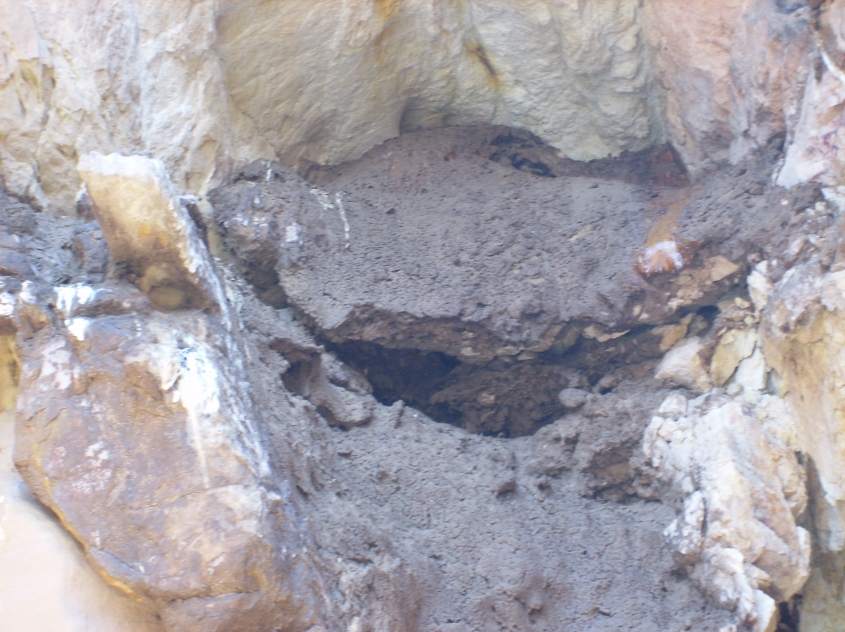
A runnel of the black effluvia drips from the throat, and the walls near the throat are splattered with a white substance.

Taste testing the white substance indicated an alkaline bitterness. Being in a National Park, samples could not be taken, so no further analysis is available.

Off-gassing bubbles can be quite elaborate in volatile flows of foaming minerals. This carbonate rock fizzed like seltzer before it suddenly phase-changed to solid leaving exquisite bubble molds. Such sudden phase change implies an instantaneous electro-chemical process due to electrical discharge and recombination.

 This image shows why off-gassing bubbles are part of deposition, not sputtering. The bubbles are in the untouched surface rock above, while the scalloped break in the rock (from a cupping spall caused by sputtering) has no holes. The holes were already there when the canyon was sputtered, and are only a near surface feature caused by off-gassing.
This image shows why off-gassing bubbles are part of deposition, not sputtering. The bubbles are in the untouched surface rock above, while the scalloped break in the rock (from a cupping spall caused by sputtering) has no holes. The holes were already there when the canyon was sputtered, and are only a near surface feature caused by off-gassing.

While theory and conclusions presented here are the sole opinion of the author, appreciation to the researchers who spent hot, grimy hours exploring Canyonlands to obtain photos and data is due. Researchers Larry White, Bruce Leybourne, David Orr Steve Cash and Ginger endured extreme heat, dangerous roads, treacherous heights and fine sand in their food, examining the wonders of Canyonlands, Utah for this article.
Thank you.

Quick Tip
Please help support The Daily Plasma.
$2.00














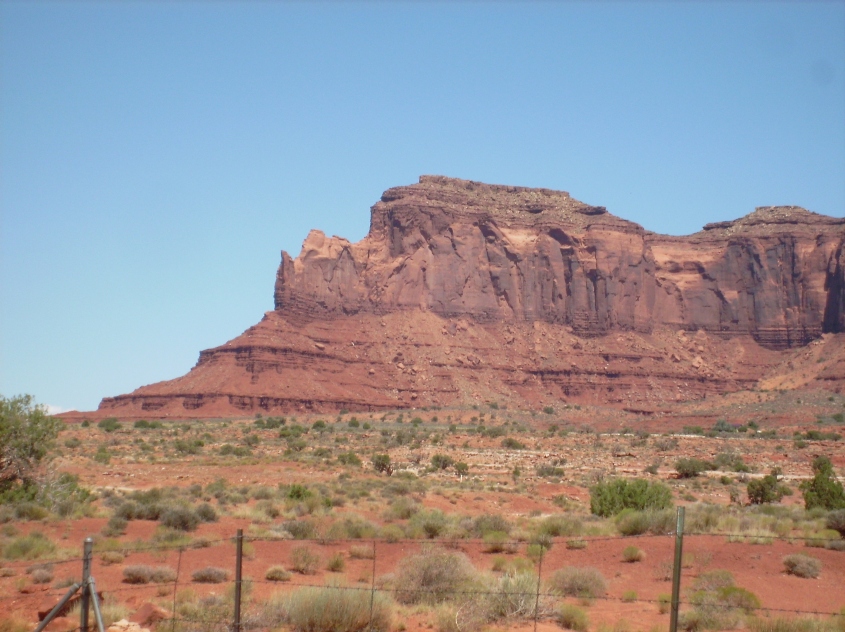 The step pyramid structure, or terracing on canyon walls and buttes is another evidence of sputtering. Each sedimentary layer has different compositions of minerals and moisture, differentiating the dielectric property of each layer. The zone of charge depletion under lightning strikes spreads out in a conical diffusion pattern, but the cone is stepped, or terraced, because there is a step voltage across each dielectric layer.
The step pyramid structure, or terracing on canyon walls and buttes is another evidence of sputtering. Each sedimentary layer has different compositions of minerals and moisture, differentiating the dielectric property of each layer. The zone of charge depletion under lightning strikes spreads out in a conical diffusion pattern, but the cone is stepped, or terraced, because there is a step voltage across each dielectric layer. Where there are towering cliffs with sheer vertical walls, it is because it is a monolithic layer with a consistent dielectric, causing a single large voltage step.
Where there are towering cliffs with sheer vertical walls, it is because it is a monolithic layer with a consistent dielectric, causing a single large voltage step.
 Evidence of shearing is especially evident on monolithic walls. Sharp edged breaks are everywhere, leaving smooth, flat faces, hardly roughened, or rounded by any act of erosion.
Evidence of shearing is especially evident on monolithic walls. Sharp edged breaks are everywhere, leaving smooth, flat faces, hardly roughened, or rounded by any act of erosion.


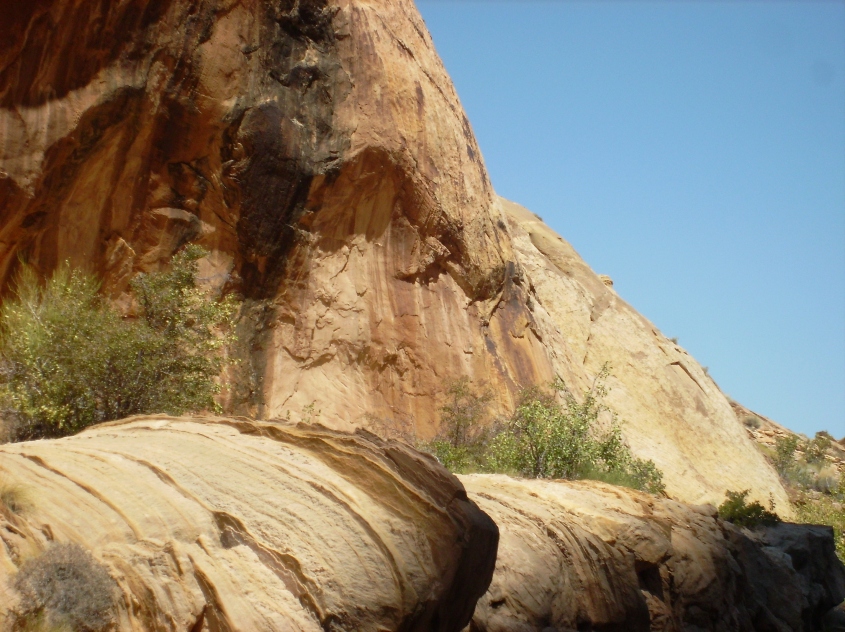



 Pinnacles in this region are of two types. Fulgarites, like the burnt shard of Agathla peak, are the direct result of lightning boiling up the crust of the earth in an electromagnetic blister. These types of pinnacles were discussed in
Pinnacles in this region are of two types. Fulgarites, like the burnt shard of Agathla peak, are the direct result of lightning boiling up the crust of the earth in an electromagnetic blister. These types of pinnacles were discussed in 
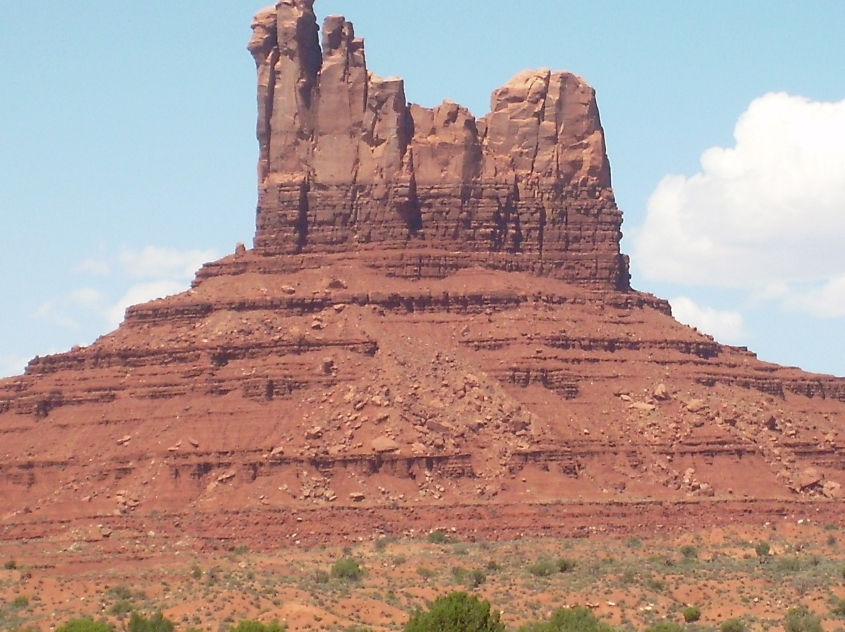 More sustained, or potent striking begins to diffuse charge depletion outward, forming nodes, or star like breakouts.
More sustained, or potent striking begins to diffuse charge depletion outward, forming nodes, or star like breakouts.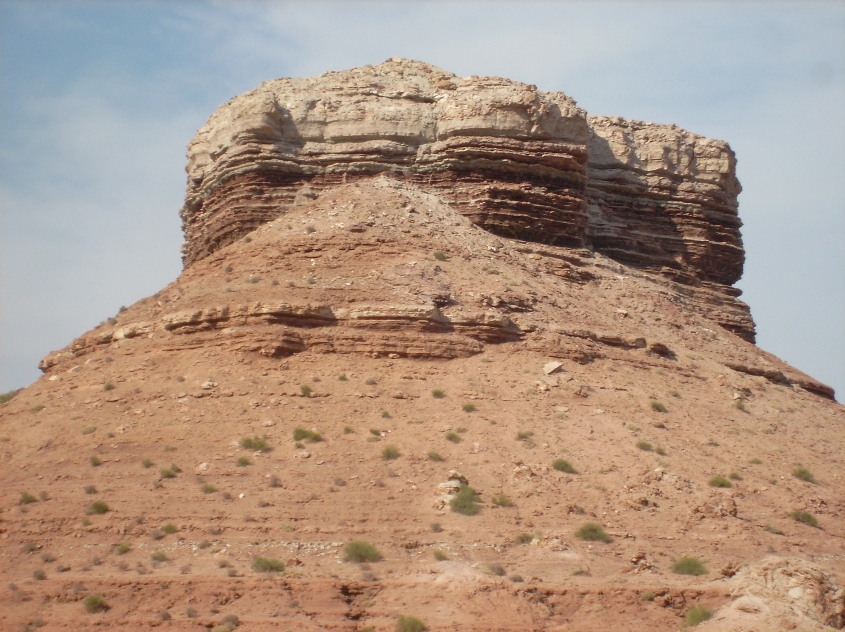 Still larger accumulation of strikes, diffuses charge further, and nodules break out into ‘wings’, or dykes of charge depleted rock.
Still larger accumulation of strikes, diffuses charge further, and nodules break out into ‘wings’, or dykes of charge depleted rock.

 The shadow footprint grows as arcing continues, elongating charge depleted zones into wedges with dykes growing out the tips and edges. It’s actually the beginning of a fractal dendrite, as lightning bombardment soaks charge from the ground, diffusing outward in branches and creating a depleted zone protected from sputtering. If the process continued before the surroundings sputtered away, the dendrite nodules would grow and branch in ever smaller fractal repetitions, like branches of a tree.
The shadow footprint grows as arcing continues, elongating charge depleted zones into wedges with dykes growing out the tips and edges. It’s actually the beginning of a fractal dendrite, as lightning bombardment soaks charge from the ground, diffusing outward in branches and creating a depleted zone protected from sputtering. If the process continued before the surroundings sputtered away, the dendrite nodules would grow and branch in ever smaller fractal repetitions, like branches of a tree.



 As adjacent rock is struck, the depleted zones connect into networks of wedges, ridges and pinnacles.
As adjacent rock is struck, the depleted zones connect into networks of wedges, ridges and pinnacles.
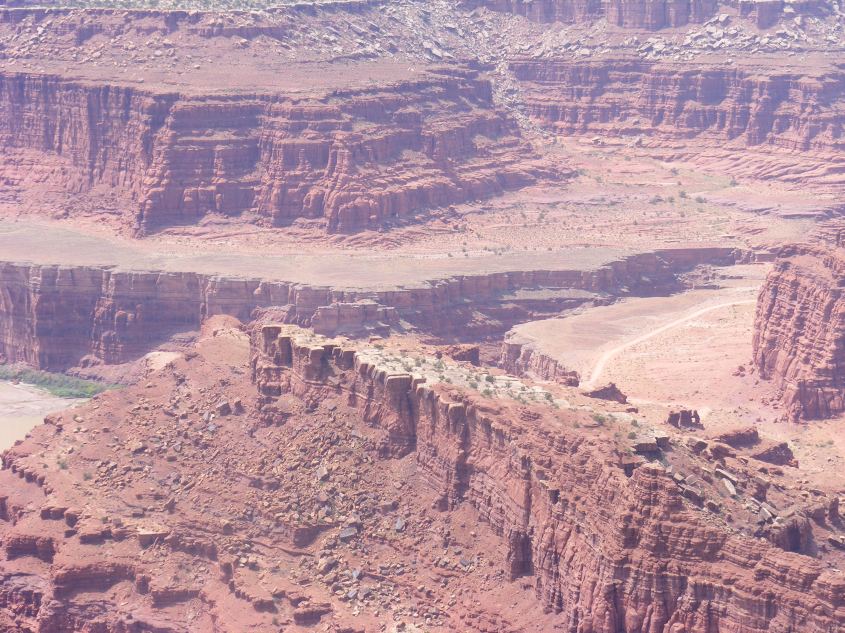

 Generally, the pinnacles and buttes left on a dome are layered flat, but in some areas buttes display a dip, indicating horizontal winds influenced the deposition. Sputtering follows the voltage gradient, and so carves away from the lightning depleted zone in alignment with the strata because the voltage gradient follows the dielectric layers, cutting at 90º to the dip angle, leaving a straight-edged non-vertical wall. If eroded by conventional notions of wind, rain and mass wasting, the rock would obey gravity and erode a vertical wall. It is in details like this that prove electrical formation.
Generally, the pinnacles and buttes left on a dome are layered flat, but in some areas buttes display a dip, indicating horizontal winds influenced the deposition. Sputtering follows the voltage gradient, and so carves away from the lightning depleted zone in alignment with the strata because the voltage gradient follows the dielectric layers, cutting at 90º to the dip angle, leaving a straight-edged non-vertical wall. If eroded by conventional notions of wind, rain and mass wasting, the rock would obey gravity and erode a vertical wall. It is in details like this that prove electrical formation.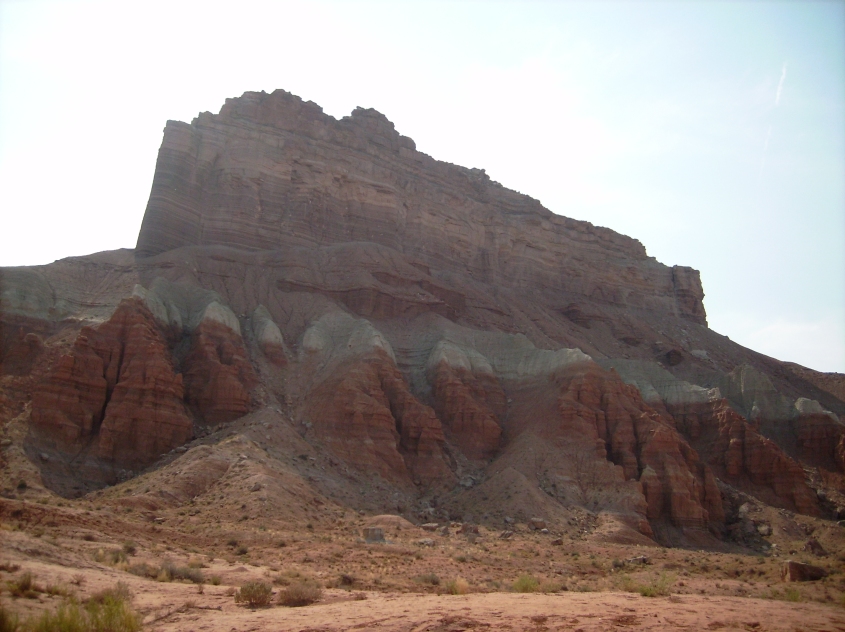 What we see in the stepped pyramids and terraced canyons is the result of two types of charge transport in a solid state matter. One is drift ionization caused by the external electric field of the storm, and the other is
What we see in the stepped pyramids and terraced canyons is the result of two types of charge transport in a solid state matter. One is drift ionization caused by the external electric field of the storm, and the other is 
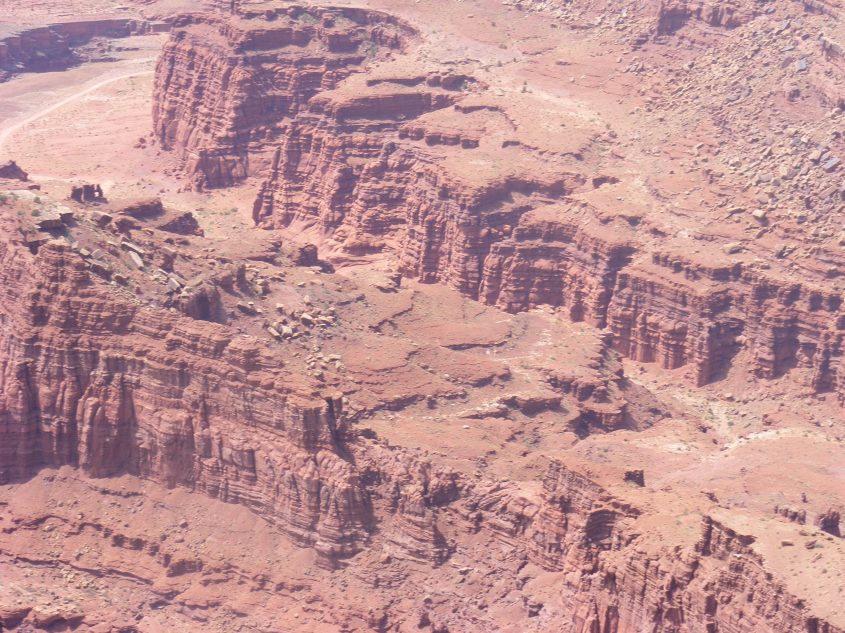



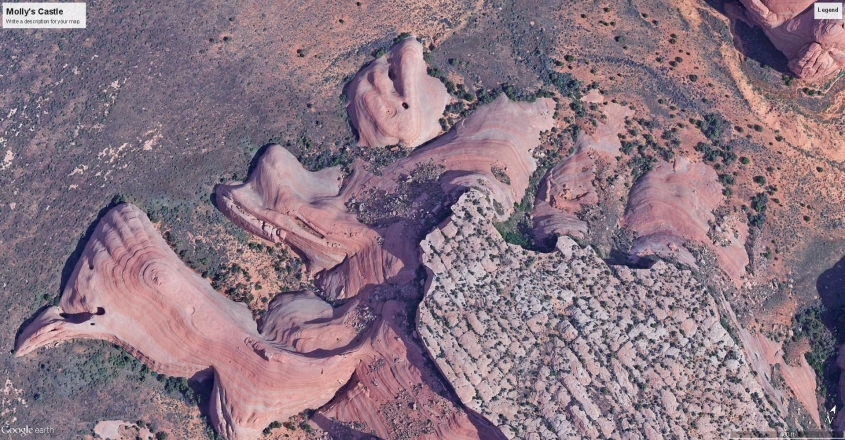 Compelling evidence the scalloped and terraced walls are a result of charge diffusion is shown in this image, where the archetype of all fractal shapes emerges – the Mandlebrodt Set.
Compelling evidence the scalloped and terraced walls are a result of charge diffusion is shown in this image, where the archetype of all fractal shapes emerges – the Mandlebrodt Set.